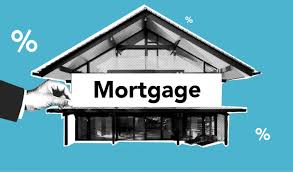## What is the Meaning of the Term Mortgage?
The term **mortgage** is commonly heard in the world of finance, real estate, and property investment. It is a critical concept that plays a central role in enabling individuals and businesses to acquire real estate without paying the full purchase price upfront. Understanding what a mortgage is, how it works, and the various types involved can help individuals make informed financial decisions. This article provides a detailed explanation of the term **mortgage**, its features, types, and significance in the modern financial system.
---
### Definition of a Mortgage
A **mortgage** is a legal agreement in which a borrower receives funds from a lender to purchase a property and, in return, agrees to repay the loan over time, typically in monthly installments. The property itself acts as **collateral** for the loan. This means that if the borrower fails to make the required payments, the lender has the right to seize and sell the property to recover the outstanding loan amount.
In simple terms, a mortgage is a **loan secured by real estate**. It is one of the most common methods used by individuals to buy homes or other types of real estate without paying the entire cost upfront.
---
### Key Components of a Mortgage
A mortgage consists of several important components:
1. **Principal**: The original amount of money borrowed from the lender.
2. **Interest**: The cost of borrowing money, expressed as a percentage of the principal. Interest is added to each payment made over the life of the loan.
3. **Loan Term**: The duration over which the borrower agrees to repay the loan. Common terms include 15, 20, or 30 years.
4. **Monthly Payments**: These include both principal and interest payments, and may also include property taxes and insurance.
5. **Collateral**: The property being purchased serves as collateral, meaning the lender can foreclose on the property if the borrower fails to make payments.
6. **Amortization**: A process through which loan payments are spread out over time, with the interest portion being higher in the earlier years and the principal portion increasing over time.
---
### Types of Mortgages
There are several types of mortgages, each suited to different financial situations and property types:
#### 1. **Fixed-Rate Mortgage**
A fixed-rate mortgage has a constant interest rate throughout the term of the loan. This means the borrower pays the same monthly amount, making budgeting predictable and easier.
#### 2. **Adjustable-Rate Mortgage (ARM)**
In an ARM, the interest rate is fixed for an initial period and then adjusts periodically based on market conditions. This can lead to lower initial payments, but higher payments in the future if rates increase.
#### 3. **Government-Backed Mortgages**
These include loans insured or guaranteed by government entities like the Federal Housing Administration (FHA), the Department of Veterans Affairs (VA), or the U.S. Department of Agriculture (USDA). These loans often require lower down payments and are more accessible to those with limited credit.
#### 4. **Interest-Only Mortgages**
In this type, the borrower only pays interest for a certain period (e.g., first 5 or 10 years), after which regular payments of both principal and interest begin. These are riskier and less common.
#### 5. **Balloon Mortgages**
These loans have low payments for a set period and then require a large lump-sum payment at the end. They are usually used in specific investment scenarios.
---
### How Does a Mortgage Work?
Here is a simplified process of how a mortgage works:
1. **Application**: The borrower applies for a mortgage with a lender, providing details about income, assets, debts, and credit history.
2. **Approval and Underwriting**: The lender reviews the application and determines if the borrower qualifies. They assess the risk and set terms accordingly.
3. **Down Payment**: The borrower makes an upfront payment, typically between 5% and 20% of the property’s value.
4. **Loan Disbursement**: The lender provides the funds needed to purchase the property.
5. **Repayment**: The borrower makes regular payments over the loan term until the mortgage is paid off.
6. **Foreclosure (if necessary)**: If the borrower defaults, the lender may initiate foreclosure proceedings to recover their money.
---
### Importance of a Mortgage
Mortgages play a vital role in the economy and in individual lives for several reasons:
- **Homeownership**: Mortgages allow people to buy homes without saving for decades to afford the full price.
- **Wealth Building**: Real estate can appreciate over time, creating wealth for homeowners.
- **Economic Activity**: The mortgage industry fuels real estate transactions, construction, and banking services.
---
### Risks and Considerations
While mortgages provide many benefits, they also come with risks:
- **Foreclosure**: Failing to make payments can result in loss of the home.
- **Interest Costs**: Over the life of the loan, interest payments can significantly increase the total cost.
- **Market Risks**: If property values decline, homeowners can owe more than their homes are worth (known as being "underwater").
---
### Conclusion
A **mortgage** is more than just a loan—it is a cornerstone of personal finance and property ownership. It allows individuals to access real estate, build equity, and invest in their future. However, it also requires careful planning, commitment, and understanding of the terms involved. Whether you're buying your first home or investing in real estate, understanding the meaning and workings of a mortgage is essential for making wise financial decisions.
---
If you'd like this turned into a PDF, PowerPoint, or summarized version, just let me know!











0 Comments